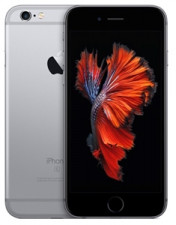
The latest iPhones are equipped with a range of better hardware and functionality, but are they worth the small fortune? I put them to the test.
Compared to the previous iPhone 6 and 6 Plus, the new models look identical. They feature the same metal casing with rounded corners, stripes on the back for the antenna and a slightly protruding camera. Both devices still feel comfortable from an ergonomic perspective - they have a solid and durable design and facilitate smooth swiping as a result of the slightly curved front.
The same design also implies that previous points of criticism remain. The bezels on the top and bottom of the 6S Plus are relatively big for a 5.5-inch smartphone. Compared to the similar sized LG G4, of which the front is 75% pure screen real estate, the iPhone 6S Plus scores poorly with just 68%. On smaller sized phones, relatively big bezels aren't that much of an issue. However, with larger devices big bezels will have affect how comfortable the device feels while holding it in one hand.
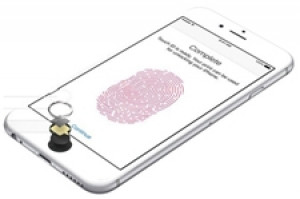
Right below the screen, both new iPhones feature the characteristic Touch-ID button, again including the much appraised, built-in fingerprint reader. This one works even faster than on the previous iPhones.
Despite the unchanged appearance, there are some subtle, interesting enhancements. Both models are now made out of an even tougher material that Apple calls the "7000 series aluminium". Last year the Bendgate fuss created some negative discussion around the device's durability. This time Apple wanted to be absolutely sure the new models wouldn't give that same vulnerable impression. And I have to agree, they feel rock solid.
As a result of the new, less flexible material both devices are marginally thicker and heavier than their more bendable brothers. The added thickness is barely noticeable, but the extra weight isn't. The 6S Plus especially feels heavy in the hand when compared to the 172gr of the older iPhone 6 Plus.
iPhone 6S | iPhone 6S Plus | |
Weight | 143g | 192g |
Dimensions | 138 x 67 x 7.1 mm | 158 x 78 x 7.3 mm |
Screen | 4.7-inch | 5.5-inch |
Resolution | 1334 x 750 (326 ppi) | 1920 x 1080 (401 ppi) |
Contrast ratio | 1800:1 | 1400:1 |
Battery | 1715 mAh | 2750 mAh |
Camera | Digital image stabilisation | Optical image stabilisation |
Screen: welcome improvements
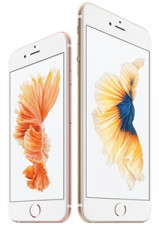
The screens of the new iPhones are practically the same as their predecessors. The 6S features a similar 4.7-inch display with a 1334 x 750 resolution, resulting in a 326ppi pixel density. The 6S Plus houses a 5.5-inch screen able to display 1920 x 1080 pixels and therefore a pixel density of 401ppi. With both models, these specifications are considerably lower than competing devices. Good thing I'm not a big fan of these extremely high resolutions, like the Quad-HD on Samsung's S6 flagship device.
While these extremely high screen resolutions may sound impressive when marketing the device, the actual benefit is nearly impossible to detect with the naked eye. In fact, the incredibly high number of pixels puts more strain on the device's hardware, and battery life, without offering anything substantial in return.
The small improvements are hidden in the details. Although both screens may be similar in size and resolution, when it comes to the actual screen quality there are definitely some interesting enhancements to be noticed.
The maximum brightness that I measured (6S: 560 cd/m2, 6S Plus: 575 cd/m2) by using dedicated equipment is slightly higher than that of the older iPhone 6 (511 cd/m2) and iPhone 6 Plus (510 cd/m2). In practice, this converts into even better readability during bright light situations. Same goes for the contrast ratio, which determines how vivid the colours are displayed. The contrast ratio of the iPhone 6S is especially impressive for a screen that uses LCD technology.
3D Touch & iOS 9

According to Apple, the biggest innovation of the new iPhones is 3D Touch. This technology enables the device to feel how hard you press your finger on the screen. Apple added an extra layer of sensors to the screen, thus enabling the phone to register downward force.
One of the very first implementations that uses the 3D Touch technology is the iOS home screen. If you gently press an app-icon, a new menu pops up, best comparable to the options you get when pressing the right mouse button on a computer. Applications are theoretically limitless, like taking a selfie when pressing the camera app, or directly calling a favourite contact by simply pressing the phone icon.
It took some time for me to get used to the idea of 3D Touch. It doesn't help that only a few apps, or icons, currently support this new technology. More and more apps will undoubtedly start adding extra 3D Touch-related functionality in the near future.
3D Touch can also be used to quickly see a preview of an item. Apple calls this "Peek and Pop". For instance, in the Mail app you can press the subject line and the device will show you a short preview of the content. Just let go of the screen and the preview disappears. Want to read the whole e-mail? Just apply more pressure to the screen and the complete content of the message will display.
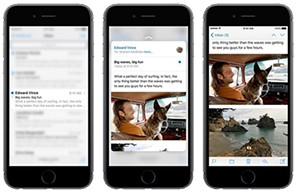
The new 3D Touch feature, and all subsequent navigational options that come with it, does require some finesse. While with previous iPhone models there was no need to be precise regarding pressure (you either tap something or you don't), 3D Touch forces you to actively think about the way you handle your phone. In its defence, you also get more options and features in return.
The new iPhones also feature the latest iteration of Apple's mobile operating system. iOS 9 offers hundreds of improvements and novelties, like the upgraded intelligence of Siri, Apple's embedded digital assistant. With iOS 9, Siri proactively shows you tailor-made information based on your location, agenda and time of day. For more information on how the new Siri can help make your day at the office even more efficient, take a look here.
Hardware: double the RAM
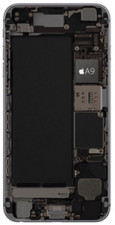
Although Apple is never keen to release many details about the internal hardware of their latest iPhones, I do know they run on the new Apple A9 SoC. This chip uses two separate processor cores, each running at a max of 1.84GHz, which Apple internally calls "Twister cores". They're connected to 8MB of cache and a PowerVR GT7XT GPU. The amount of RAM in the new iPhones has now doubled to 2GB, which was about time.
Finally, the iPhone 6S and 6S Plus feature the new M9-coprocessor, a piece of tech used to read and analyse all data generated by the device's internal array of sensors. Unfortunately, Apple still only put a scanty 16GB in the entry-level model. Given the ever-increasing size of photos and the new 4K-video feature, I find that choice disappointing. Of course, you can always go straight for the 64GB version, but that will set you back another R1 800.
Performance: good for business
So how does this new hardware translate into actual performance? The answer is speed, and a whole lot of it. With these latest iPhones, Apple adds even more raw processing power, making these devices very future proof and ready for the next wave of hardware-hungry, demanding business apps.
Talking about apps, I was pleasantly surprised at how fast they now start. Multitasking and switching between (large) apps is also considerably smoother than on the previous models. To top it all, there currently are no 3D-games that can bring the new iPhone down to its knees. Even in the browser, while visiting relatively complex sites that all need to be rendered individually as quick as possible, the new iPhones were noticeably faster than previous models.
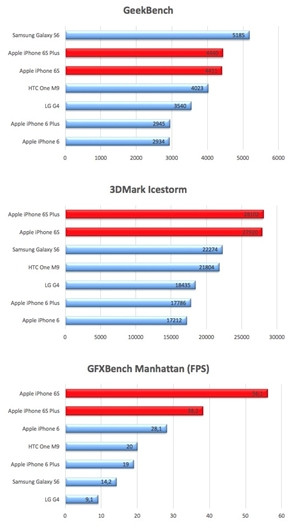
Perhaps even more important than the extra processing power is the doubling of RAM. Although iOS is quite efficient in that department, demanding business users that frequently multitask will know that there's a limit to the number of apps you can simultaneously run in the background. With the new iPhones, there is a lot less waiting for the background apps to reload and be ready to use, or tabs in the browser for that matter.
I ran three separate benchmarks, each focused on a different part of the hardware. I then compared their performance with that of the previous iPhones, as well as with flagship devices from competitors like LG, HTC and Samsung.
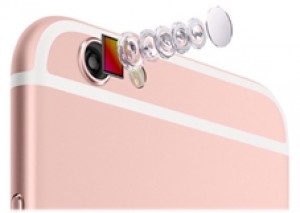
The Geekbench multicore test, which primarily benchmarks the CPU, clearly shows that the new iPhones are significantly faster than their predecessors, slightly more powerful than the LG G4 and HTC One M9, but surprisingly can't beat the Samsung Galaxy S6. Both the 3DMark Icestorm (CPU + GPU) and GFXBench Manhattan (GPU only, measured in frames per second) benchmarks show off the real power of the iPhone 6S and 6S Plus, easily outperforming their Android-based competitors as well as the previous iPhone models.
Camera: more megapixels
Since the iPhone 5, Apple consistently used an 8MP camera sensor on the back of the device. With the 5S and 6, that sensor was enhanced with higher light sensitivity and phase detection-autofocus. The resolution, however, stayed untouched. The new iPhone 6S and 6S Plus, however, feature a 12MP rear camera, resulting in 50% more megapixels.
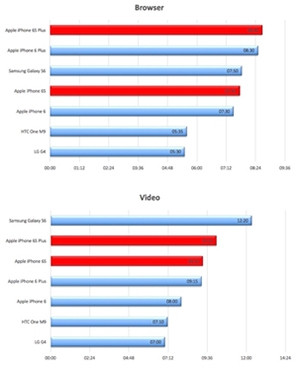
A new feature, which rather painfully illustrates Apple's desperate quest for innovation, is called Live Photos. This novelty, which is thankfully turned off by default, adds 1.5 seconds of video before and after each taken photograph. I personally don't see the added value of this feature. The end result takes up 3x more storage space than just the picture - which is problematic with the 16GB model, of which only 11GB is free for user content.
Same as with previous models, the Plus version is fitted with superior Optical Image Stabilisation (OIS), while the 6S uses software to compensate for shaky hands. With the relatively high price of the 6S in mind, that's frankly disappointing, especially since almost every competing high-end device offers OIS at a much lower price.
The overall backside-camera quality of the new generation iPhones is definitely better than that of their predecessors. However, it doesn't quite match LG's G4 and Samsung's S6 superior image quality. In difficult low light situations, both the iPhone 6S and 6S Plus disappoint because of too much digital noise, artefacts and yellow spots. The optical image stabilisation technology inside the 6S Plus, however, helps to marginally improve on image quality in dark scenarios.
Apple wisely upgraded the front facing camera from 1.2MP to 5MP and added an innovative way to help in low light situations. There's no LED-flash, but the screen briefly turns its brightness up to the max. Although this solution is far from optimal, it definitely helps the front camera capture better pictures in dark scenarios.
The new iPhones can now also shoot video in the ultra-high 4K resolution, which boils down to 3840x2160 pixels. Nice if you actually have a 4K screen at the office, or at home. Otherwise, this feature is only handy if you want to crop the fragments afterwards. On the 16GB model, the phone can only facilitate 20 minutes of 4K-video before it runs out of storage space.
Battery life: full day at the office
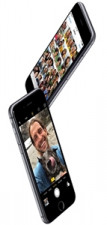
To keep the new iPhones as compact and light as they currently are, Apple was forced to slightly decrease the size of both their batteries. The 6S Plus houses a 2750mAh version (6 Plus: 2915mAh). The 6S is downgraded to a 1710mAh battery (6: 1810mAh). Nonetheless, Apple claims similar battery life as a result of a more energy efficient A9-Soc production process in combination with smarter use of the display and GPU, called panel self refresh.
To put that claim to the test I ran two battery benchmarks. The browser test tries to drain the device as quickly as possible while continuously running through multiple Web sites. The video test repeatedly shows a Full-HD fragment until the phone runs out of power.
According to the browser test, both new iPhones perform just a tad better than their predecessors. Both models will easily help you through a long day at the office, or on the road. The 6S Plus, because of a higher capacity battery, will even have enough energy left for some hours of overtime. The new iPhones last significantly longer than the HTC One M9 and LG G4. Samsung's S6, however, is able to put up a bit more of a fight.
The video test showed less spread among the various devices. This is because playing a 1080p video is less of a strain on the CPU, so there is less advantage to gain by lower energy consumption. It is primarily the screen that draws energy in this specific test. Since Samsung's devices use OLED technology, they are extremely energy efficient, as this test confirms. Still the new iPhones outlast their predecessors, the LG G4 and HTC One M9 when watching video.
Final verdict
So, do all the small improvements justify buying the new iPhone? If you currently own an iPhone 6, absolutely not. In regular day-to-day business use, the benefits are simply too insignificant and the device too pricey. Competitive Android devices with similar high-end specifications are a lot cheaper, but perhaps not the best option if you're locked into Apple's ecosystem.
Don't get me wrong: from a technical point of view, they're excellent devices. Both models are fast, house a great screen, offer an improved design, have good battery life and two nice cameras. Although 3D Touch has potential, there are no killer-applications or functionality available... yet.
iPhone 5S users who feel the device can't meet their demands anymore, will absolutely benefit from the 6S' new design and enhanced hardware. If they can wait for the iPhone 7 though, they definitely should.
Anybody with an iPhone 5 or even older, and a small fortune to spare, will find the new models to be an excellent, future-proof choice.
Share